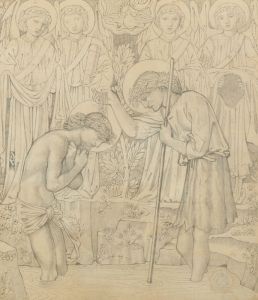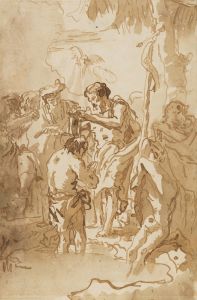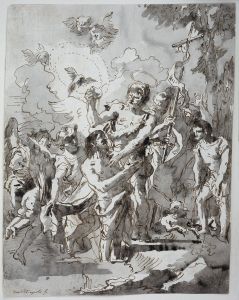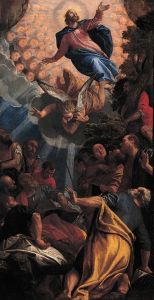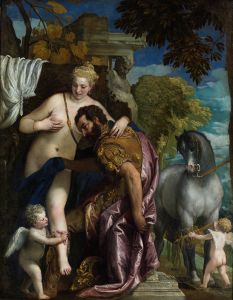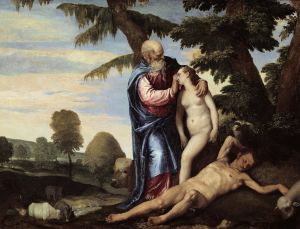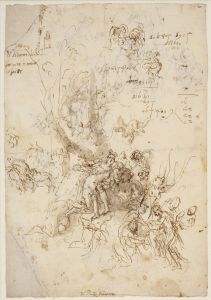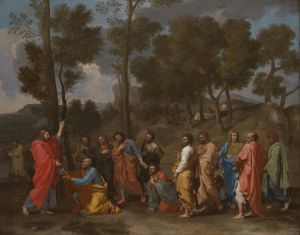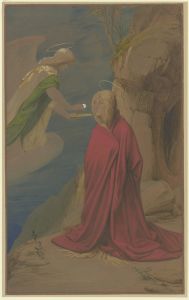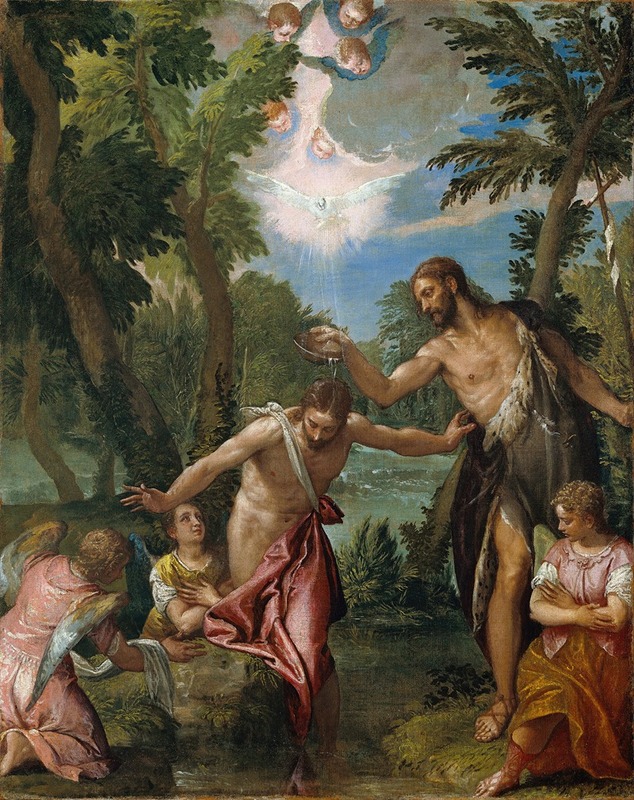
The Baptism of Christ
A hand-painted replica of Paolo Veronese’s masterpiece The Baptism of Christ, meticulously crafted by professional artists to capture the true essence of the original. Each piece is created with museum-quality canvas and rare mineral pigments, carefully painted by experienced artists with delicate brushstrokes and rich, layered colors to perfectly recreate the texture of the original artwork. Unlike machine-printed reproductions, this hand-painted version brings the painting to life, infused with the artist’s emotions and skill in every stroke. Whether for personal collection or home decoration, it instantly elevates the artistic atmosphere of any space.
"The Baptism of Christ" by Paolo Veronese is a notable work of art created by the renowned Italian Renaissance painter Paolo Veronese. Veronese, whose real name was Paolo Caliari, was born in 1528 in Verona, Italy, and became one of the most prominent painters of the Venetian school. He is celebrated for his large-scale historical and religious paintings, characterized by their vibrant color, intricate compositions, and dramatic use of perspective.
This particular painting, "The Baptism of Christ," depicts the biblical event of Jesus Christ's baptism by John the Baptist, a common subject in Christian art. The scene is set at the River Jordan, where John the Baptist is shown pouring water over Jesus' head, symbolizing the act of baptism. This moment is significant in Christian theology as it marks the beginning of Jesus' public ministry and is often associated with the revelation of the Holy Trinity.
Veronese's interpretation of this event is marked by his distinct style, which includes a masterful use of color and light to create a sense of depth and realism. The figures in the painting are rendered with great attention to detail, showcasing Veronese's skill in depicting human anatomy and expressions. The composition is typically dynamic, with a sense of movement and interaction among the figures, which is a hallmark of Veronese's work.
The painting also reflects the influence of the Venetian Renaissance, known for its emphasis on color and light rather than the linear perspective that dominated the Florentine school. Veronese's use of color is particularly noteworthy; he employs a rich palette that brings vibrancy and life to the scene, enhancing the spiritual and emotional impact of the event.
"The Baptism of Christ" is believed to have been created during the latter part of Veronese's career, a period when he produced some of his most mature and sophisticated works. This painting, like many of Veronese's religious works, was likely commissioned for a church or a religious institution, as was common practice during the Renaissance.
While specific details about the commission and the exact date of creation for "The Baptism of Christ" are not well-documented, the painting remains an important example of Veronese's contribution to religious art. It exemplifies his ability to convey complex theological themes through the medium of painting, making them accessible and engaging to viewers.
Veronese's work, including "The Baptism of Christ," continues to be studied and admired for its artistic excellence and its role in the development of Renaissance art. His paintings are housed in various museums and collections around the world, where they continue to inspire and captivate audiences with their beauty and historical significance.





